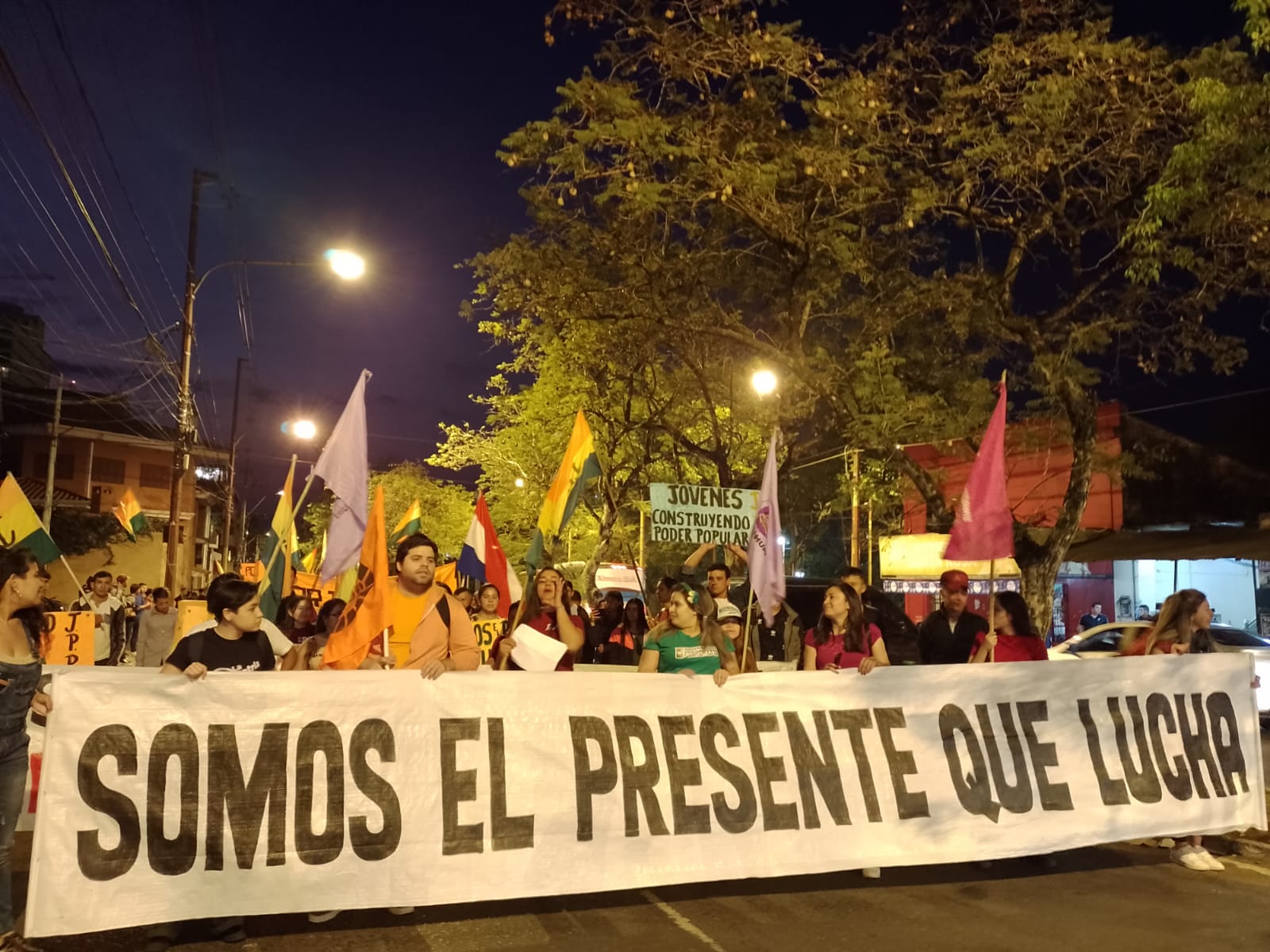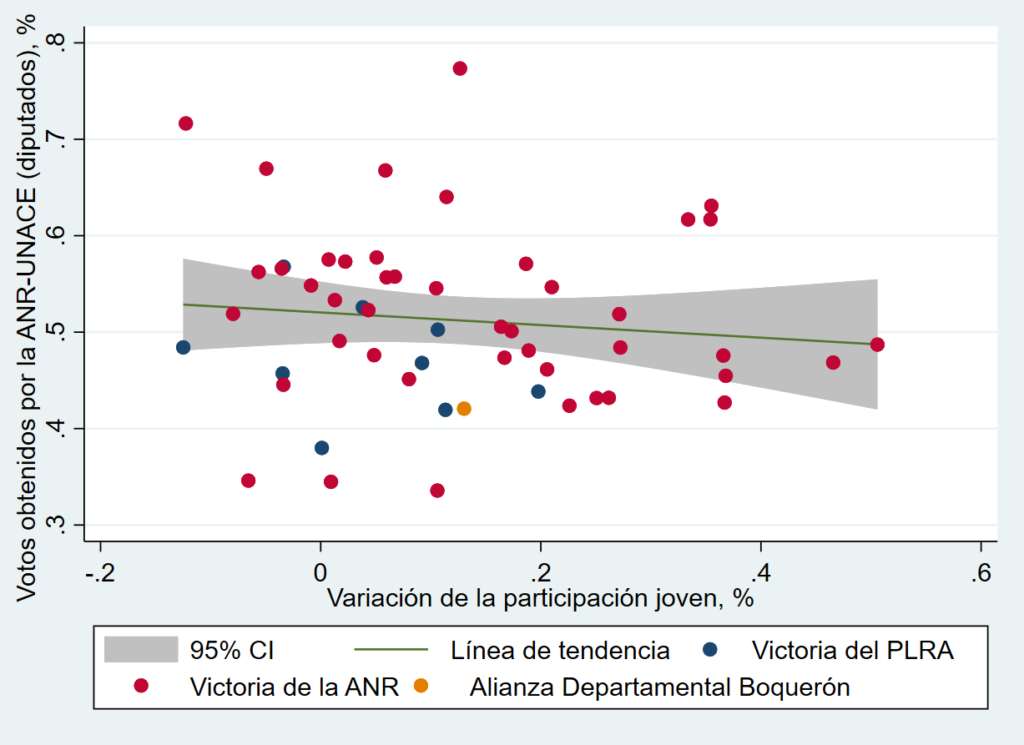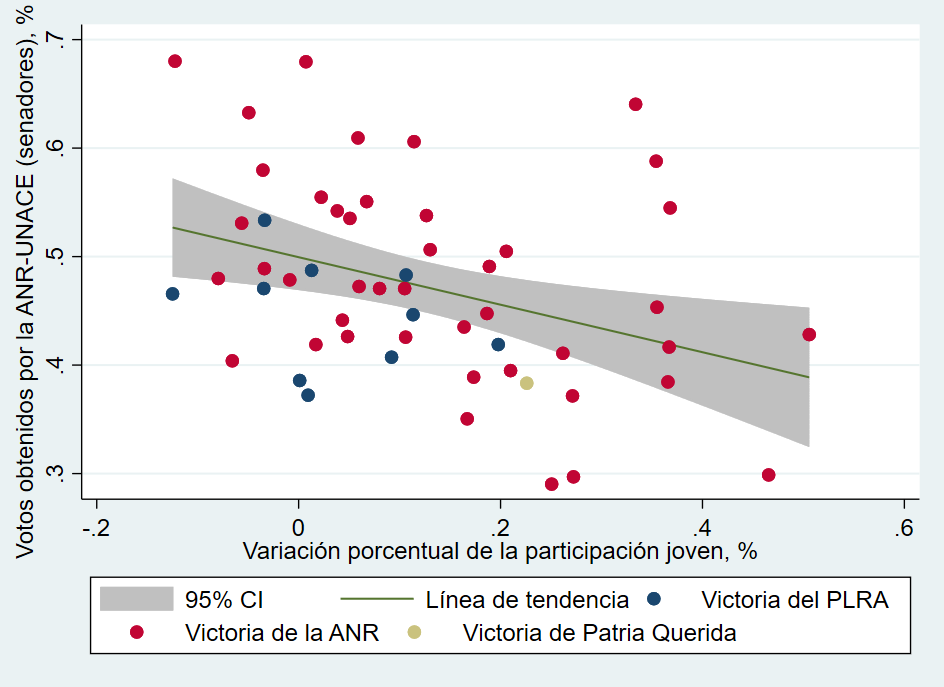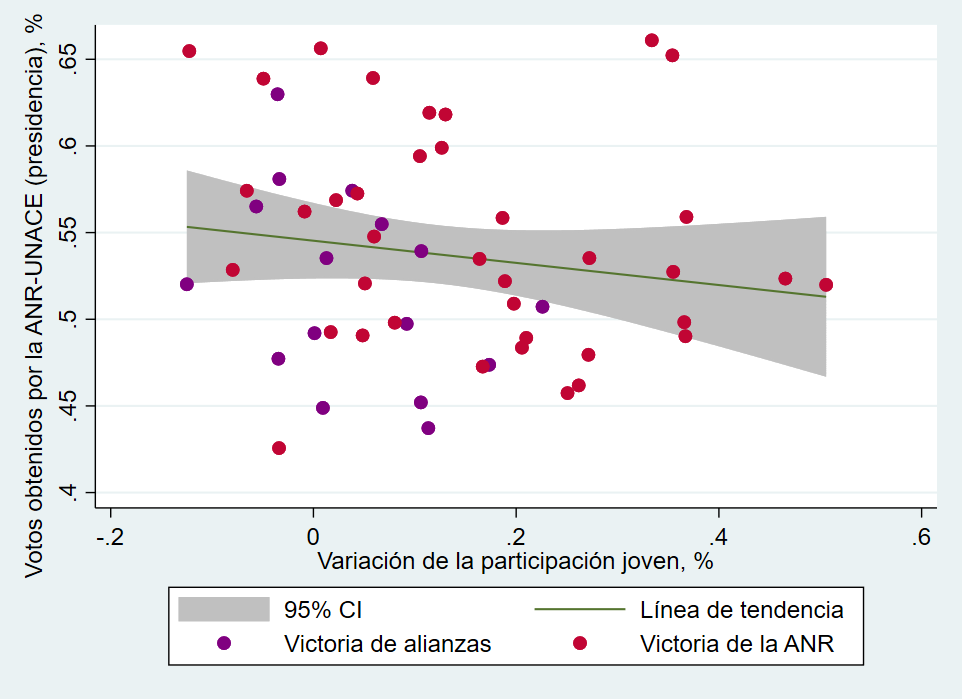
By Rodrigo Ibarrola
In the previous issue we had discussed the supposed lack of interest of young people (people between 18 and 29 years old) in participating in electoral elections. Making some population adjustments in the estimation of electoral participation, we have verified -contrary to what is usually affirmed- that young people have been voting in greater proportion since 2003 onwards, favored, to a great extent, by the automatic registration.
In this issue we test the hypothesis of whether the participation of the younger population is related to a decrease in the votes of the traditional structures. In this assumption, for the sake of simplicity, we assume the hegemonic party par excellence, the Colorado Party, as the traditional structure.
For this test, we used a panel database of general election results by department (plus Asunción) for the offices of president and vice president, senators and members of the house for the years 2008, 2013 and 2018. We also considered UNACE voters as colorado (in essence, they are), so in the estimate, their votes were aggregated to the ANR. As an independent variable, we took the percentage change in youth turnout relative to the previous election adjusted for population, using a random effects model.
we can conclude that the increase in suffrage among people between 18 and 29, only, would not be equivalent to a decrease in votes for the ANR for the positions of president and vice-president and the house. Meanwhile, for senators there is a negative correlation, although it is far from being decisive.
The results of the exercise show that for the House of Representatives the result was not significant, or rather, there is no relationship between the increase in the participation of people aged between 18 and 29, and the sum of votes obtained by the ANR and UNACE. A greater participation of young people would not cause the Colorado Party to lose votes in terms of members of the house. Consequently, other factors that influence the choice of one option or another by young people should be sought. In addition, as can be seen in Figure 1, the ANR wins in all the departments (red dots) in which the increase in youth participation exceeded 20% in relation to the previous election.
Votes obtained by the ANR-UNACE for members of the house and variation in youth participation in percentages
 Source: Own, with data from the National Statistics Institute (INE) and the Superior Court of Electoral Justice (TSJE).
Source: Own, with data from the National Statistics Institute (INE) and the Superior Court of Electoral Justice (TSJE).
However, the picture is somewhat different for the Senate. Estimates show that, if the youth participation of the department registers an increase of 10% with respect to the previous general election, there would be a decrease of between 1.4% and 3.8% in the proportion of votes that the combined votes of the ANR and UNACE would obtain in 95% of the cases. The difference with respect to the House of Representatives may perhaps be due to the number of seats available, to the fact that the electoral district is national and offers greater options to the voters. Although the correlation is certainly statistically significant, it is weak. This means -again- that other factors influence the decrease in the number of votes obtained by ANR-UNACE. On the other hand, in terms of results (Figure 2), it is verified that the ANR won in all the electoral districts that registered an increase of over 22% in the participation of people between 18 and 29, with the exception of Asuncion in 2008.
Votes obtained by the ANR-UNACE for senators and variation of youth participation. In percentages
 Source: Own,with data from the National Statistics Institute (INE) and the Superior Court of Electoral Justice (TSJE).
Source: Own,with data from the National Statistics Institute (INE) and the Superior Court of Electoral Justice (TSJE).
Regarding the presidency and vice-presidency, although the result was statistically significant, the correlation between the variables analyzed was even weaker than the previous one. For every 10% increase in youth participation, there would be a decrease of between 0.04% and 1.9% in the proportion of votes obtained by the combined votes of the ANR and UNACE in 95% of the cases. Consequently, under a higher youth turnout, the decrease in the Colorado Party’s vote share is so subtle that, clearly, a higher youth turnout, by itself, does not represent a danger to the NRA for the presidency. Note, in Figure 3, that the ANR was the most voted political grouping in all electoral districts where youth participation increased by 22% or more in relation to the previous election.
Votes obtained by the ANR-UNACE for the presidency and variation in youth participation. In percentages
 Source: Own, with data from the National Statistics Institute (INE) and the Superior Court of Electoral Justice (TSJE).
Source: Own, with data from the National Statistics Institute (INE) and the Superior Court of Electoral Justice (TSJE).
Finally, with the limitations of the data analyzed (other positions such as governor and councilors of departmental boards and information on municipal elections were not included) and the model used, up to this point we can conclude that the increase in suffrage among people between 18 and 29, only, would not be equivalent to a decrease in votes for the ANR for the positions of president and vice-president and the house. Meanwhile, for senators there is a negative correlation, although it is far from being decisive. It is still pending to analyze the qualitative factors of why the votes of younger people are not directed towards less conservative options, as is usually the case in other countries.
Cover image: Agencia Presentes
